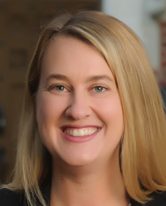When it comes to recovering money for shareholders injured by corporate fraud, do the plaintiffs’ lawyers matter? Intuitively, the answer seems like it must be yes. The most talented lawyers should develop more creative legal theories and uncover more evidence of wrongdoing. Lawyers who are better financed can chase down more leads and be more aggressive in litigating their cases.
Yet there is little empirical support for this intuition. There are a variety of lists that purport to identify the top plaintiffs’ firms, but these lists typically rely on law firms’ average settlement amount or the total value of their settlements in a given year. Although the plaintiffs’ law firms considered to be at the top of their field typically get larger settlements than other firms, their cases are fundamentally different as well. These law firms seek out and often win the lead counsel spot in cases with more promising facts, such as a parallel government investigation, termination of top officers, or restatement of financials. These law firms also target defendants with larger market capitalizations, which under the damages formula used in securities class actions typically leads to larger estimated damages.
In a new paper, we use inverse propensity score weighting (IPW) to compare the results in cases led by top-tier firms with those brought by lower-tier firms. This technique, which has been used in studies of law firm performance in other areas of the law, addresses case selection effects by using all of the cases led by a top-tier firm and then weighting the cases led by lower-tier firms based on how similar these cases are to the cases led by top-tier firms. This weighting allows the sample of cases led by top-tier firms to more closely resemble the sample of cases led by lower-tier firms. Using this approach, we can estimate the average effect of representation by a top-tier law firm.
We find that top-tier lawyers only obtain better outcomes for shareholders in a narrow subset of securities class actions. We find that most of the difference in the results obtained by top-tier and lower-tier firms disappears when we balance observable characteristics using the IPW technique. Sorting the settlements into deciles based on the market capitalization of the defendants, our proxy for the potential monetary stakes of the class action, we find that there is no significant difference in the results obtained by top-tier and lower-tier firms in market capitalization deciles 1-7 or 10. The only significant difference was in cases against companies whose market capitalizations were in deciles 8 and 9 – i.e., the larger defendants, but not the very largest.
We also look at investments by the law firms in these cases. We find that top-tier firms invest more hours and money in cases against companies in all deciles of market capitalization other than the very largest. We find that top-tier firms invest considerably more hours and expenses in cases in deciles 8 and 9. Using our reweighted samples, top-tier firms are predicted to invest almost twice the time and almost three times the expenses in deciles 8-9. The greater settlement amount for the top-tier firms in these deciles may reflect these greater investments.
These findings call into question the preferential treatment that top-tier firms receive when it comes to lead counsel appointments and fee awards in securities class actions. These firms may tout their record of success to lead plaintiffs and judges, but their records may simply reflect the fact that these firms handle cases with better facts and larger potential damages. Top-tier firms are spending more, but they are not necessarily getting better results.
It is more difficult to determine what factors are driving the results in deciles 8 and 9. One possibility may be unique financing challenges in these cases. Perhaps the cases against small and mid-sized corporate defendants are more streamlined and do not require law firms to obtain additional financing, while the cases against the very largest defendants promise enough financial return that even lower-tier firms can find the funds necessary to litigate, either through partnerships with other firms or litigation funders. The lower-tier firms litigating cases in deciles 8 and 9, however, may encounter a gap in financing options, as these cases are not small enough for lower-tier firms to finance on their own but also not big enough to attract outside funders. The greater internal resources of top-tier firms may give a litigation advantage for top-tier firms in deciles 8 and 9.
Our findings suggest some takeaways for participants in securities fraud class actions. Institutional plaintiffs should be wary of appointing a firm to be lead counsel simply because it has a history of achieving large settlements. A firm’s track record may simply reflect its luck in being awarded the role of lead counsel in cases with more promising facts. Accordingly, a savvy plaintiff should look behind a firm’s settlement numbers and inquire into facts of the firm’s cases and the firm’s specific role in increasing settlement value of these cases. Not all plaintiffs will be willing to conduct this type of inquiry, but it would help match cases to the firms that will do the most to return value to shareholders.
In awarding fees, judges should also look more closely at a firm’s specific contributions to the case. Our prior research has found that judges do not always take into account the objective factors that make settlement more likely when setting fees. Instead, they can be swayed by large settlement amounts, even if the amounts do not necessarily reflect the law firm’s efforts. Yet the top-tier firms collect more than three-quarters of the total fees in securities class actions. Our study reinforces these concerns, as we find that in most categories of cases, the top-tier firms do not obtain better results for shareholders. This finding suggests that the top-tier firms receive outsized fees for what may be baseline efforts. In awarding fees, judges should take a harder look at the lawyers’ specific contributions to the case, analyzing whether the firms actually went above and beyond in returning funds to shareholders.
Finally, lawmakers may want to revisit the lead plaintiff provisions of the Private Securities Litigation Reform Act. This legislation reflected a hope that large, institutional plaintiffs would select the best law firms to litigate securities class actions. Our research, however, casts doubt on whether institutional plaintiffs are performing this role effectively. If the top-tier firms are generally not producing better results than other firms, then these institutions may simply serve as an entry ticket into the most lucrative cases, rather than the monitor that Congress envisioned.
This post comes to us from Stephen J. Choi, Bernard Petrie Professor of Law and Business, New York University; Jessica M. Erickson, Nancy Litchfield Hicks Professor of Law, University of Richmond; and A.C. Pritchard, Frances and George Skestos Professor of Law, University of Michigan. It is based on their recent article, “Paying for Performance? Attorneys’ Fees in Securities Fraud Class Actions,” available here.
 Sky Blog
Sky Blog


